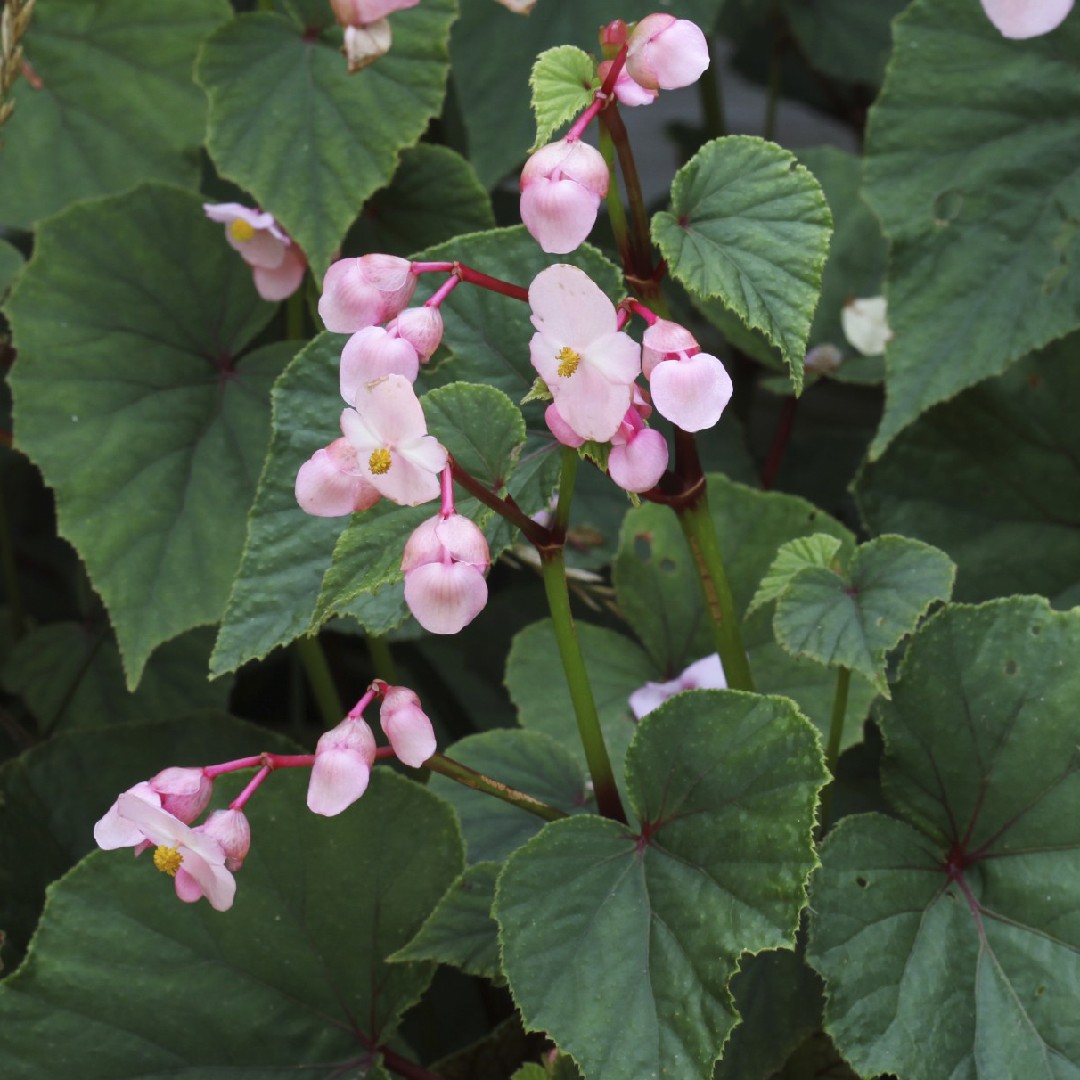Begonia Grandis: A Complete Guide
Begonia Grandis, also known as Hardy Begonia or Begonia evansiana, is a stunning perennial plant that belongs to the Begoniaceae family. This beautiful plant is native to China, Japan, and Korea, and has become a popular choice for gardeners around the world due to its striking foliage and delicate flowers.
Description
Begonia Grandis is a rhizomatous perennial plant that typically grows to a height of about 12-18 inches and spreads to about 18-24 inches. It has attractive, asymmetrical leaves that are green with red undersides, giving it a unique and eye-catching appearance. The leaves are typically 4-6 inches long and have a textured surface that adds to its charm.
Propagation
Begonia Grandis can be propagated through seeds, division, or cuttings. Seeds can be collected from the plant after the flowers have faded and can be sown in a well-draining potting mix. Division can be done in the spring, by separating the rhizomes and planting them in separate containers. Cuttings can be taken from healthy stems and placed in a moist potting mix to root.
Light and Temperature
Begonia Grandis thrives in bright, indirect light and prefers temperatures between 60-75 degrees Fahrenheit. It can tolerate some direct sunlight, but too much can scorch its delicate leaves. It is a hardy plant that can withstand temperatures as low as 20 degrees Fahrenheit, making it suitable for growing in USDA zones 6-9.
Watering and Feeding

Begonia Grandis prefers consistently moist soil and should be watered when the top inch of soil feels dry to the touch. Overwatering can lead to root rot, so it is important to allow the soil to dry out slightly between waterings. Fertilize the plant with a balanced liquid fertilizer every 2-4 weeks during the growing season to promote healthy growth.
Pruning and Maintenance
Begonia Grandis is a low-maintenance plant that requires minimal pruning. Deadheading the flowers as they fade can encourage more blooms to form. Remove any yellowing or damaged leaves to keep the plant looking its best. Repot the plant every 2-3 years to refresh the soil and provide it with fresh nutrients.
Pests and Diseases
Begonia Grandis is relatively pest and disease resistant, but it can occasionally be affected by mealybugs, spider mites, and aphids. These pests can be treated with insecticidal soap or neem oil. Powdery mildew and botrytis can also be a problem, especially in humid conditions. Proper air circulation and avoiding overhead watering can help prevent these fungal diseases.
Uses
Begonia Grandis is a versatile plant that can be grown in containers, hanging baskets, or as a ground cover in shaded areas. Its attractive foliage and delicate flowers make it a popular choice for woodland gardens, shaded borders, and rock gardens. It can also be used as a houseplant, provided it is placed in a bright location with indirect sunlight.
Conclusion
Begonia Grandis is a stunning plant that is sure to add beauty and charm to any garden. With its attractive foliage, delicate flowers, and easy care requirements, it is a great choice for both beginner and experienced gardeners. Whether grown indoors or outdoors, Begonia Grandis is sure to delight with its unique and captivating presence. Consider adding this lovely plant to your collection and enjoy its beauty for years to come.